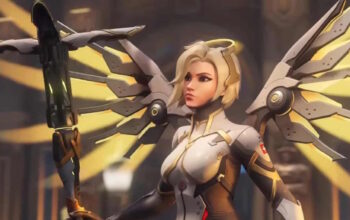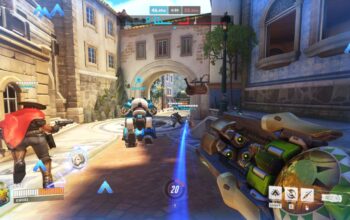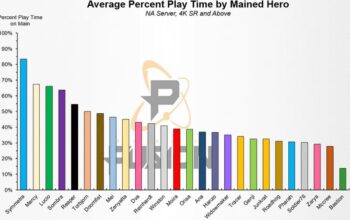In a recent developer update video, Overwatch game director Aaron Keller announced that several maps, including Coloseo, Havana, Circuit Royale, Dorado, and Numbani, will be reworked in future seasons. While the reasoning behind the reworks for Coloseo, Havana, and Circuit Royale is relatively clear, with issues like long sightlines and limited flank routes, the decision to rework Dorado and Numbani has left many players puzzled. In this blog post, we’ll delve into the reasons why these two maps are considered problematic and in need of an overhaul.
The Challenges of Numbani:

Numbani’s first point is notorious for being one of the most technically demanding points to attack in the game. The combination of close high ground, weak flank routes, and a strong far high ground that is inaccessible to heroes without vertical mobility makes it extremely difficult for attackers to improvise an effective strategy. This point heavily favors defenders and requires tight team coordination from the attacking team, which can be frustrating for players with limited hero pools and game knowledge.
While the rest of Numbani is generally considered playable, the first point’s brutal defender’s advantage sets the tone for the entire map. Ideally, map design should gradually increase the defender’s advantage as the map progresses, with the first point being the easiest to capture and the third point being the most challenging. However, Numbani subverts this principle, leading to frequent full holds on the first point and a sense of frustration among players.
Dorado’s Imbalances:

Dorado’s first point is generally considered balanced, but the second point presents a significant challenge for attackers lacking high ground mobility. The long flank routes required to engage high ground defenders make it unfun to play certain heroes and nearly eliminates the viability of Brawl/Rush compositions. This limitation in strategic options can be frustrating for players who prefer a more diverse range of playstyles.
The third point of Dorado suffers from weak flank angles, with the lower flank route by the mini health pack being nearly useless and sharing the same chokepoint as the top-right flank. The left flank is rarely used due to its distance from the team and the need for vertical mobility, further limiting the options available to attackers.
The Importance of Map Fairness and Accessibility:
A well-designed map should feel fair, offering players a diverse set of options for attacking and defending while allowing individual agency to impact the outcome of fights. Maps that heavily favor specific compositions or hero attributes can be less enjoyable for the majority of players, as they limit strategic diversity and counterplay options.
Furthermore, maps should be accessible and dynamic, allowing new players to quickly grasp the basic strategies without being at a massive disadvantage compared to experienced players. The older Overwatch maps, including Dorado and Numbani, are largely “solved,” and the knowledge gap between new and experienced players can lead to a less enjoyable experience for those still learning the intricacies of the game.
Just in case you find yourself lost playing on these maps, we would recommend watching high rank players as well as considering cheap Overwatch Duo Carry boosting to learn and climb the ranks.

The decision to rework Dorado and Numbani in future Overwatch seasons stems from the maps’ inherent flaws, which include heavily biased strategies, limited hero viability, and the need for tight team coordination. These factors contribute to a less enjoyable experience for players with limited hero pools and game knowledge, as well as those who prefer a more diverse range of playstyles.
By addressing the issues present in these maps, such as oppressive high ground advantages and weak flank routes, the Overwatch development team aims to create a fairer and more accessible competitive environment. As the game continues to evolve, it is crucial to ensure that maps offer a balanced and engaging experience for players of all skill levels and preferences.



